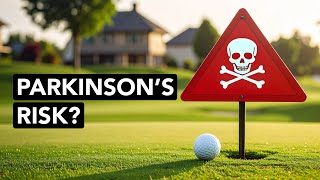
Breaking News
 BREAKING: GOP Virginia Lawmaker Doused in Gasoline, Set on Fire in His Office...
BREAKING: GOP Virginia Lawmaker Doused in Gasoline, Set on Fire in His Office...
 Third Person Arrested in Cincinnati Mob Beatings; Woman Victim Is Russian Who Flew Home...
Third Person Arrested in Cincinnati Mob Beatings; Woman Victim Is Russian Who Flew Home...
 10 Examples That Show That Our Society Is Going Completely Insane
10 Examples That Show That Our Society Is Going Completely Insane
 Watch: China Robot Giant Unveils Tesla Optimus Killer That Can Fist-Fight
Watch: China Robot Giant Unveils Tesla Optimus Killer That Can Fist-Fight
Top Tech News
 "No CGI, No AI, Pure Engineering": Watch Raw Footage Of 'Star Wars'-Style Speeder
"No CGI, No AI, Pure Engineering": Watch Raw Footage Of 'Star Wars'-Style Speeder
 NASA's X-59 'quiet' supersonic jet rolls out for its 1st test drive (video)
NASA's X-59 'quiet' supersonic jet rolls out for its 1st test drive (video)
 Hypersonic SABRE engine reignited in Invictus Mach 5 spaceplane
Hypersonic SABRE engine reignited in Invictus Mach 5 spaceplane
 "World's most power dense" electric motor obliterates the field
"World's most power dense" electric motor obliterates the field
 The Wearables Trap: How the Government Plans to Monitor, Score, and Control You
The Wearables Trap: How the Government Plans to Monitor, Score, and Control You
 The Streetwing: a flying car for true adventure seekers
The Streetwing: a flying car for true adventure seekers
Magic mushrooms may hold the secret to longevity: Psilocybin extends lifespan by 57%...
 Unitree G1 vs Boston Dynamics Atlas vs Optimus Gen 2 Robot– Who Wins?
Unitree G1 vs Boston Dynamics Atlas vs Optimus Gen 2 Robot– Who Wins?
 LFP Battery Fire Safety: What You NEED to Know
LFP Battery Fire Safety: What You NEED to Know
 Final Summer Solar Panel Test: Bifacial Optimization. Save Money w/ These Results!
Final Summer Solar Panel Test: Bifacial Optimization. Save Money w/ These Results!
Living Near a Golf Course Dramatically Raises Risk of Parkinson's

Story at a glance:
• Residents within a mile of golf courses have a 126% higher chance of developing Parkinson's disease compared to those living farther away.
• Golf course chemicals infiltrate groundwater supplies and drift through the air, creating multiple exposure pathways for nearby residents.
• Stricter pesticide regulations in Europe result in dramatically lower chemical hazard scores compared to American golf courses, especially in southern states.
• Dense residential areas near golf courses lack natural barriers, concentrating airborne pesticides and increasing your vulnerability to chemical exposure.
• Regular exercise helps eliminate accumulated pesticides, while water filtration and air purifiers reduce ongoing chemical exposure at home.
In the U.S., Parkinson's disease currently affects around 1.5 million people, with about 60,000 new cases diagnosed each year.
While age and genetics are believed to be risk factors for this condition, research shows that where you live also plays a role. Specifically, people living right next to golf courses have a higher risk.



